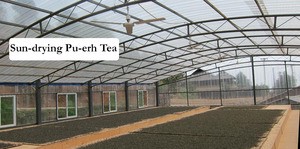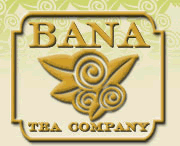
While the title might seem a little circular, I have occasionally heard or read that raw pu-erh starts out as a green tea or that pu-erh tea, before aging, is a green tea. There are similarities in the processing of the two teas but there are also major differences that result in their being properly classified into two separate categories of tea.
It is important not to confuse raw pu-erh with what we consider green tea. Pu-erh has been the traditional tea from Yunnan for many centuries. However, Yunnan green tea (Dian Lu) and Yunnan black tea (Dian Hong), have only been in production in Yunnan since 1939. Raw pu-erh, before it is pressed into cakes, is known as Dian Qing (Yunnan blue-green). (In China, a code, typically a single character, is assigned to represent each province. For example, Yue is the code for Guangdong and Dian is the code for Yunnan. The character Qing is a shade between blue and green and should not be mistaken as green.) Dian Qing is naturally sun-dried in the final step of processing. The finished tea, called mao cha or primary leaves, is pressed into cakes, ready to be consumed or aged. This is raw pu-erh. The sun-drying step is crucial in the making of pu-erh tea because the lower heat from the sun does not completely dry the leaves, thus allowing for the future aging of the tea.
Raw pu-erh, before it is pressed into cakes, is known as Dian Qing (Yunnan blue-green). (In China, a code, typically a single character, is assigned to represent each province. For example, Yue is the code for Guangdong and Dian is the code for Yunnan. The character Qing is a shade between blue and green and should not be mistaken as green.) Dian Qing is naturally sun-dried in the final step of processing. The finished tea, called mao cha or primary leaves, is pressed into cakes, ready to be consumed or aged. This is raw pu-erh. The sun-drying step is crucial in the making of pu-erh tea because the lower heat from the sun does not completely dry the leaves, thus allowing for the future aging of the tea.
Dian Lu (Yunnan green), on the other hand, is dried in a machine using high heat. The high heat, by design, is to stop the leaves from oxidizing thereafter. As a result, Yunnan green is to be consumed while the tea is fresh as green tea cannot be aged.
As described above, green tea is a tea appreciated for its freshness, while pu-erh is a tea appreciated for its ability to age. The two should not be confused.

